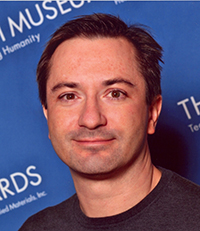Human-Propelled Machine Learning 
 |
Wednesday, November 4, 2015 Richard G. Baraniuk |
ABSTRACT:
In typical applications of machine learning (ML), humans typically enter the process at an early stage, in determining an initial representation of the problem and in preparing the data, and at a late stage, in interpreting and making decisions based on the results. Consequently, the bulk of the ML literature deals with such situations. Much less research has been devoted to ML involving “humans-in-the-loop,” where humans play a more intrinsic role in the process, interacting with the ML system to iterate towards a solution to which both humans and machines have contributed. In these situations, the goal is to optimize some quantity that can be obtained only by evaluating human responses and judgments. The “humans-in-the-loop” paradigm requires a statistical model for human interactions with the environment, which controls how the experimental design adapts to human feedback; such designs are, in general, difficult to construct due to the complex nature of human behavior. In this talk, we will study the particular case of developing new ML frameworks for improving learning in educational contexts, which is an exciting new research frontier.
BIOGRAPHY:
Richard Baraniuk is the Victor E. Cameron Professor of Electrical and Computer Engineering at Rice University and the Founding Director of Connexions (cnx.org) and OpenStax College (openstaxcollege.org). His research interests lie in new theory, algorithms, and hardware for sensing, signal processing, and machine learning. He is a Fellow of the IEEE and AAAS and has received national young investigator awards from the US NSF and ONR, the Rosenbaum Fellowship from the Isaac Newton Institute of Cambridge University, the ECE Young Alumni Achievement Award from the University of Illinois, the Wavelet Pioneer and Compressive Sampling Pioneer Awards from SPIE, and the IEEE Signal Processing Society Technical Achievement Award.
His work on the Rice single-pixel compressive camera has been widely reported in the popular press and was selected by MIT Technology Review as a TR10 Top 10 Emerging Technology. For his technology-enabled education projects, he has received the C. Holmes MacDonald National Outstanding Teaching Award from Eta Kappa Nu, the Tech Museum of Innovation Laureate Award, the Internet Pioneer Award from the Berkman Center for Internet and Society at Harvard Law School, the World Technology Award for Education, the IEEE-SPS Education Award, the WISE Education Award, and the IEEE James H. Mulligan, Jr. Medal.
| Return to EECS Joint Colloquium |